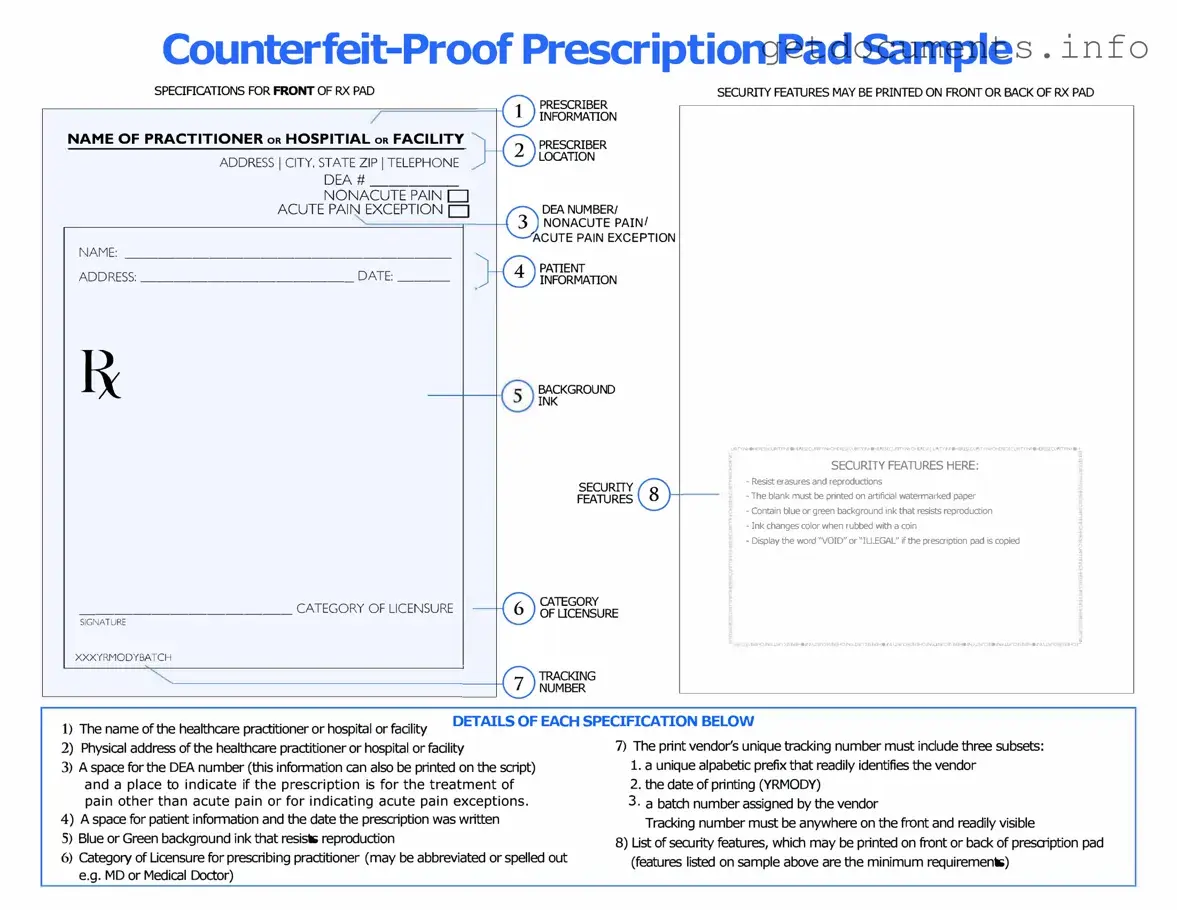The Prescription Pad form serves as a vital tool in the healthcare landscape, streamlining the process of medication management for both healthcare providers and patients. This form is not merely a piece of paper; it embodies a critical communication channel between doctors and pharmacists, ensuring that patients receive the correct medications in a timely manner. Typically, the Prescription Pad includes essential information such as the patient's name, date of birth, and the specific medications prescribed, along with dosages and instructions for use. Additionally, it often contains the prescribing physician's details, including their contact information and license number, which helps to verify the legitimacy of the prescription. With the rise of electronic health records, some practitioners now utilize digital versions of the Prescription Pad, enhancing efficiency and reducing the likelihood of errors. However, whether in traditional or digital form, the Prescription Pad remains an indispensable aspect of patient care, underscoring the importance of clear and accurate communication in the healthcare system.
